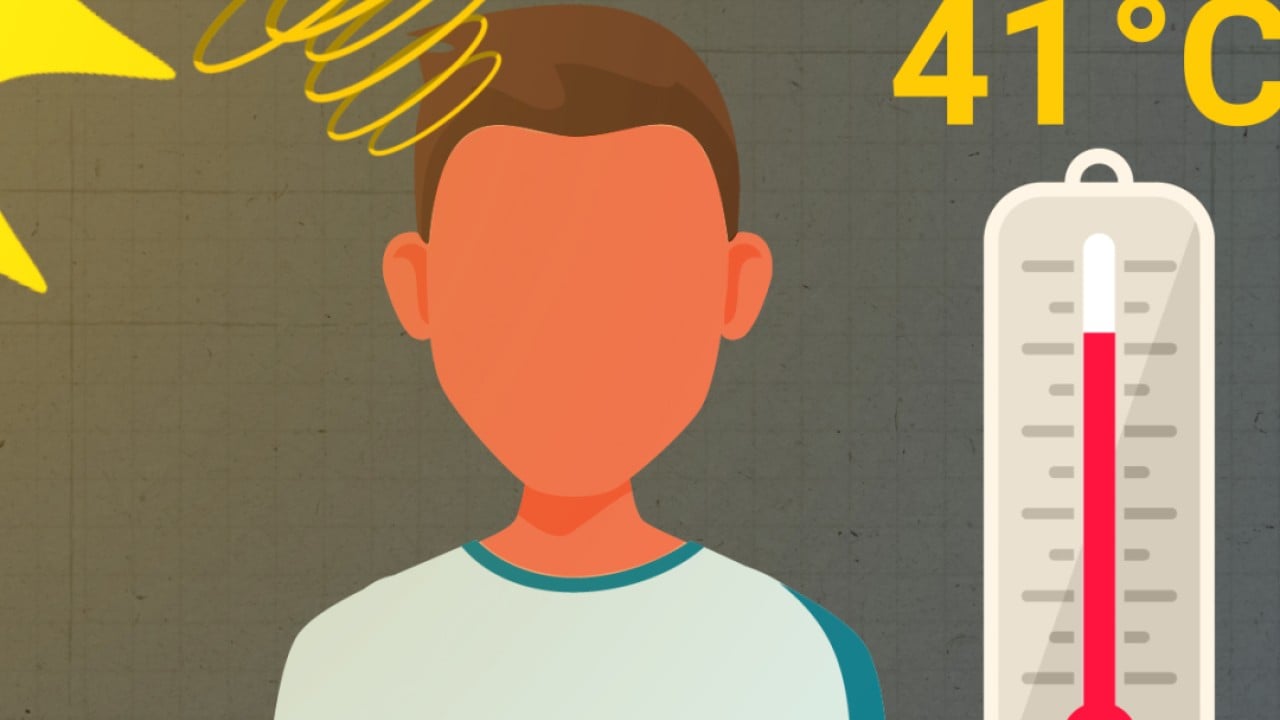Chinese scientists have developed a gel made from gelatin and salmon DNA that can reflect sunlight off buildings and create a cooling effect of up to 16 degrees Celsius.
The biodegradable material can be welded together on a large scale using only water, creating planks that can act as a passive cooling material that will reduce the need for energy-hungry cooling methods such as air conditioning and refrigeration that risk undermining the fight against global warming.
The material “is another tool for designing next-generation sustainable cooling materials”, the team from Sichuan University wrote in a paper published in the journal Science.
They added that in some parts of the world, energy consumption to “maintain a comfortable environment” could surpass 40 per cent of total energy use.
The team tested the bricks in Chengdu, the subtropical capital of Sichuan province, where the average summer highs are over 30 degrees Celsius (86 Fahrenheit) with average humidity of more than 80 per cent.
They found the aerogel bricks had an ambient cooling effect of 5.7 degrees Celsius in cloudy areas, and 16 degrees in direct sun. They even had a cooling effect of 1.8 degrees between midnight and sunrise.
Similar tests at higher altitude in Kunming, the capital of Yunnan province, found a similar daytime cooling effect of between 3.5 to 15 degrees.
“This level of ambient cooling stands among the highest reported for all existing cooling materials,” with increased potential in tropical and subtropical climates, the team said.
While the aerogel bricks could maintain their structure even under hot and humid conditions, they could also be disposed of by burying or composting the bricks, the researchers wrote.
The material can also be recycled by dissolving it in hot water and reforming it into new bricks through a freeze-drying process that had a recovery rate of nearly 100 per cent.
The team said the aerogel had “intrinsic photoluminescent” qualities – meaning it emits light after absorbing photons from sunlight – giving it a “visible light reflectance exceeding 100 per cent, that yields a large cooling effect”.
Researchers around the world have been looking into the use of fluorescent particles in cooling because their of their ability to convert incoming ultraviolet rays into visible light that radiates back out into the external environment.
To try to get around this problem the team developed an aerogel – a porous material derived from a gel – using a combination of gelatin and DNA extracted from salmon sperm.
The chemical reaction produced by mixing the gelatin and DNA gave the material a natural fluorescent quality that increased its ability to reflect light.
It also naturally reflected more incoming light from the visible and near infrared spectrum, which accounts for much of the heating effect from light.
Mixing the two also created strong chemical bonds in a crosslinked network structure, which were “pivotal” in enabling for large-scale production due to its ability to stick together and form tight welding layers.
The raw material for the gel, including the DNA, could be “exclusively sourced from renewable biological resources”, and could naturally degrade without the use of additional enzymes, they added.
The researchers also conducted building energy simulations and found that it could lead to average savings of 68.7 per cent when used as the outermost material of a building.

And while large-scale production of aerogels usually requires freeze drying with specialised equipment that limits the ability to produce it on a large scale, the team was able to overcome this by developing bricks that can be welded together using only water.
This “water welding” caused chemical bonds to form between the gelatin and DNA without the need for energy-intensive heating or toxic chemicals, the team wrote.
The aerogels even have a “self-healing” ability, as cuts made in the bricks can be moistened and sealed back together, and even a “rapid self-extinguishing ability” that offers protection against fire.
After undergoing recycling, the team said the aerogel “exhibited a uniform, oriented, and continuous layer structure, resembling that of the aerogel before recycling”.
Aerogel planted into soil in Chengdu broke down into fragments over 22 days, and bricks placed into compost achieved an 85.5 per cent biodegradation rate after 45 days.
In humid outdoor conditions in Chengdu, the aerogel was able to maintain stability and retain its original shape for more than a year, and it can can be treated with hydrophobic coatings to make it more resistant to rain.
“Our aerogel showcases strong weathering durability because it resists structural degradation even when exposed to ambient water environments,” the team wrote.
While salmon was used as the source of DNA for their aerogel, the team said their preparation methods “can be applied to various gelatinous materials and DNA sources”.




